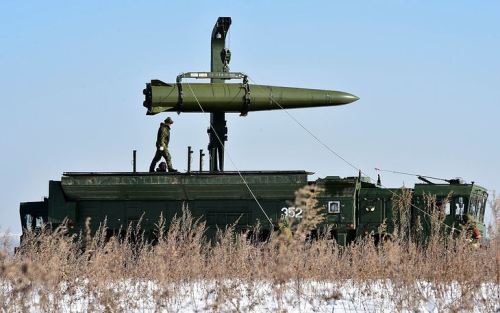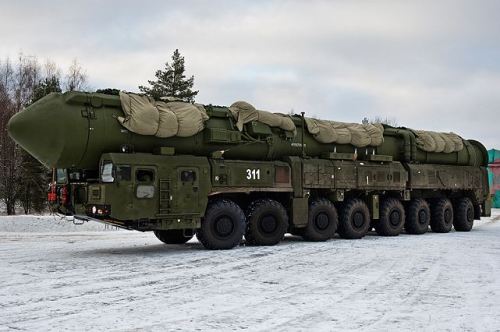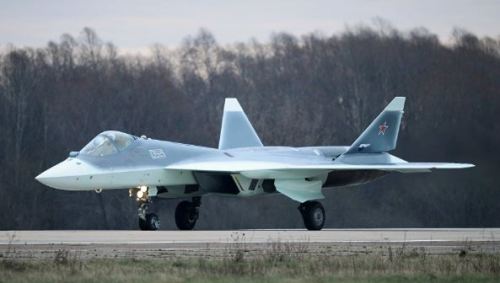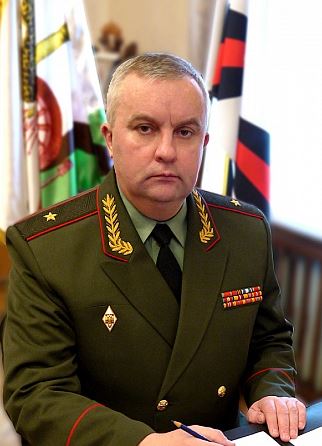
Reloading Iskander-M (photo: TASS / Yuriy Smityuk)
Time to review what the Russian Armed Forces say they got during the last year. One can’t confirm what weapons and equipment were delivered, so Russian claims have to suffice.
This information appeared in Sergey Shoygu’s speech to the MOD Collegium on December 22 found here. TASS recapped the speech later that day. And Krasnaya zvezda dutifully recounted some of it on December 27.
Overall, Defense Minister Shoygu reported that state defense order (GOZ) deliveries increased five percent over 2015.
Beyond what the Russian military procured, Shoygu had interesting remarks on other issues. They are grouped more coherently below than in the original, to preserve the reader’s patience.
Modernization, Serviceability, and Manning
Shoygu announced that Russia’s “combat possibilities” increased 14 percent in 2016. From what to what, he didn’t say. “Combat possibilities” is a Russian measure of how forces are equipped, divided by other key factors like manning, readiness, training, and morale.
Service modernization percentages are:
- Navy up to 47 percent.
- Aerospace Forces (VKS) up to 66 percent.
- Ground Troops — 42 percent.
- Airborne Troops — 47 percent.
- RVSN — 51 percent.
(N.B. Percentages reported at the end of 2015 were 39, 52, 35, 41, and 51 respectively.)
Arms and equipment in “permanent readiness” units are 58 percent modern, according to the defense minister. The in-service rate of equipment in these units is 94 percent (up 5 percent from 2015).
Serviceability of VKS aircraft is 62 percent.
According to Shoygu, the armed forces are manned at 93 percent of their authorized strength, and 384,000 contractees are in the ranks. The NCO ranks are fully professional for the first time. Apparently, the military no longer relies on conscripts hastily turned into sergeants.
Force Structure Changes
New equipment allowed for force structure expansion in the Ground and Airborne Troops. According to TASS, Shoygu reported that nine new formations, including four motorized rifle and one tank division, appeared in the former. In the latter, three reconnaissance battalions, six tank companies, and EW and UAV companies were established.
Navy
In 2016, the Russian Navy received 24 ships and support vessels, and the Proyekt 636.3 diesel-electric submarines Velikiy Novgorod and Kolpino for the Black Sea Fleet. The surface vessels included a Proyekt 22870 rescue ship, a Proyekt 19920 hydrographic ship, Proyekt 11356 frigates Admiral Grigorovich and Admiral Essen, and Proyekt 12700 mine countermeasures ship Aleksandr Obukhov.
The Navy acquired 100 Kalibr (SS-N-27 / Sizzler) and Oniks (SS-N-26 / Strobile) cruise missiles. These missiles are carried on new Proyekt 636.3 subs and Proyekt 11356 frigates.
In early December, logistics chief Army General Dmitriy Bulgakov said 19 of the 24 ships delivered were auxiliaries. And Admiral Essen fouled its screws while mooring before departing for its Black Sea homeport. The third Proyekt 11356 Admiral Makarov did not reach the fleet, nor did the first Proyekt 22350 Admiral Gorshkov frigate, or the initial Proyekt 11711 LSD Ivan Gren. Another less than impressive year of naval construction.
Aerospace Forces
The air forces received:
- 139 aircraft, including Su-35S fighters and ten Yak-130 trainers. Eight Su-30SM fighters went to Crimea, two to Rostov-na-Donu, and others to the Northern and Baltic Fleet.
- Unspecified numbers of new Mi-28N, Ka-52, Mi-35M, Mi-26, Mi-8AMTSh-VA, and Mi-8MTV-5 helicopters.
- Four regimental sets of S-400 SAMs, 25 Pantsir-S gun-missile systems, and 74 radars.
- Two modernized Tu-160M and two modernized Tu-95MS strategic bombers.
Ground Troops
The Ground Troops reportedly received 2,930 new or modernized systems allowing for two missile brigades, two SAM brigades and two SAM regiments, one Spetsnaz brigade, 12 motorized rifle and tank battalions, and three artillery battalions to be reequipped.
Besides two brigade sets of Iskander-M, they obtained 60 Tornado-G MRLs, 70 modernized Grad-M MRLs, and 20 Msta-SM SP howitzers. They acquired 22,000 communications systems bringing that equipment to 49 percent modern. More than 100 BTR-82AM joined Western MD forces. They also received ten new EW systems.

Eleron-3SV UAV package for Ground Troops
The armed forces procured 105 systems with 260 UAVs. These included more than ten new Orlan-10 and Eleron-3 UAVs. They formed 36 units and subunits. The Russian military now operates 600 systems with 2,000 UAVs, compared with only 180 old systems in 2011.
Airborne Troops
The Russian airborne got 188 new or modernized vehicles, including 60 BMD-4M and BTR-MDM, 35 BTR-82A, 40 modernized BREM-D, 2S9-1M SP mortars, and more than 6,000 D-10 and Arbalet-2 parachutes.
At his final MOD teleconference of the year, the defense minister said 764 armored vehicles and 88 artillery systems of all types were acquired in 2016.

RS-24 Yars ICBM
RVSN
Russia’s strategic missile troops placed four RS-24 Yars (SS-27 Mod 2 or SS-29?) ICBM regiments on combat duty in 2016, according to Shoygu. RVSN Commander General-Colonel Karakayev earlier said 23 Yars mobile and silo-based missiles were put into service.
The defense minister said the armed forces got a total of 41 new (intercontinental-range) ballistic missiles (presumably both land- and sea-launched), bringing Russia’s strategic nuclear triad to 60 percent modern.
The balance — 18 missiles — could be Bulava SLBMs. They might be for Borey-class SSBN hull four Knyaz Vladimir, along with a couple spares for practice launches.
Syria
Regarding use of the Syrian war as a proving ground, Shoygu said:
“162 types of modern and modernized arms were tested in the course of combat operations in Syria and showed high effectiveness. They include the newest Su-30SM and Su-34 aircraft, and Mi-28N and Ka-52 helicopters. Precision munitions and sea-based cruise missiles employed in combat conditions for the first time confirmed their tactical characteristics.”
Deficiencies were revealed which did not appear in the course of range testing. The purchase of 10 types of arms has been stopped until [deficiencies] are eliminated. As a result, we have significantly increased the quality of equipment that guarantees the reliability of its employment in battle.”
P.S. TASS added that, in 2016, the Southern MD got 350 pieces of armor, other vehicles, missiles, artillery, communications, EW, engineering, and special equipment items. Crimea in particular was reinforced with the S-400, Pantsir-S, Su-30SM, and Bastion (SSC-5 / Stooge) coastal missile launchers, which fire Oniks (SS-N-26 / Strobile) cruise missiles.







